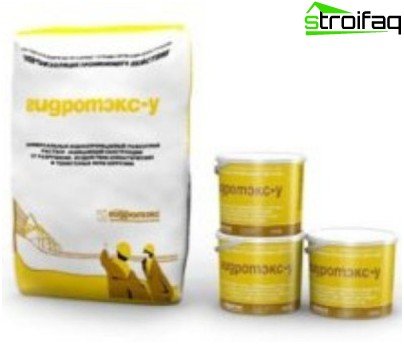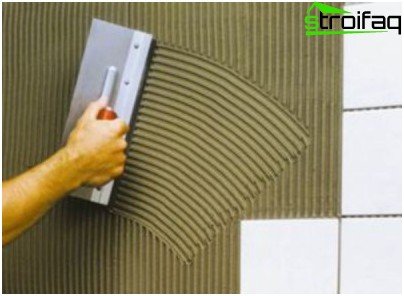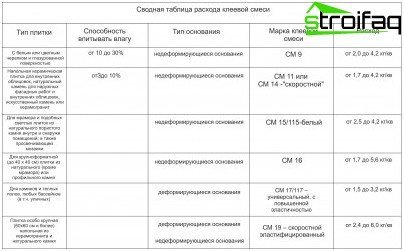Choosing tile adhesive
Laying tiles has always been the job of professionals. This type of construction work was rightfully considered one of the most complex and painstaking. But with the advent of special adhesive mixtures on the market, all work on laying tiles became much easier. This allowed to carry out styling on their own, possessing only basic skills. It took the ability to handle the tool, attentiveness and accuracy of work. The main criteria that you have to focus on when laying the tiles are its operational characteristics and the correct selection of glue for the tile. It depends on the last criterion how long and firmly the tile will hold. Therefore, before laying it is necessary to familiarize yourself with the various types of mixtures and determine which tile adhesive is better depending on the type of surface and operating conditions.
Content
- Than a tile can be stuck?
- Glue for a tile: how to choose
- Glue application temperature
- Why elasticity is needed?
- Availability and Adjustment Time
- Adhesion – Adhesion
Than a tile can be stuck?

Types of tile adhesive vary in composition and performance
Today you can find several different types of adhesives. Each of them has its own composition, on which the operational characteristics of the mixture depend..
The following types of adhesives are available:
Cement based adhesives. This is the most popular type of adhesive mixtures. To prepare it, water is required, and the process itself does not take much time. The elasticity of the mixture can be different and depends on the amount of added water. With it, you can lay tiles on concrete, brick or plastered substrates. Also carry out internal and external finishing work. The price of this glue is quite low.
Epoxy adhesives. They are a ready-made adhesive mixture without solvents, sold in paste form. A feature of such adhesives is the possibility of their use for cladding ceilings. In addition, they can be used as a fixing, leveling and adhesive material for concrete, wood, ceramics, metal, or used to repair and fill cracks and holes.
Dispersion Adhesives. Like epoxy adhesives, dispersion adhesives are a paste-free mixture without solvents. This type of glue is perfect for laying tiles of large size and mass. It can be used on surfaces such as chipboard and drywall. In addition, this glue is perfect for fixing various heat-insulating materials..
Polyurethane Adhesives. This adhesive has high elasticity and is perfect for substrates with a high degree of deformation. Such adhesives are used for floor and metal tiles, as well as for wooden substrates..
Glue for a tile: how to choose
On the market, you can find both universal and highly specialized adhesive mixtures, each of which has its own strengths. Therefore, you should decide on the surface on which the tile will be laid and the conditions for its operation. To choose the right glue, you must take into account certain characteristics. All of them are indicated on the back of the bag with the mixture. And already on their basis to choose one or another glue mixture. The following parameters should be noted:
Glue application temperature
Since the house can be tiled both inside and out, there are special types of adhesives. Facing facades and low-heated rooms requires the adhesive mixture to be highly resistant to various temperature conditions and the ability to maintain its adhesive qualities when they change. For interior decoration, adhesives with normal temperature conditions can be used. Manufacturers indicate the minimum and maximum temperature of use of glue.
Adhesives are mainly used at temperatures from + 5 ° C to + 30 ° C.
Important! If you plan to lay tiles on a surface with a “warm floor” system, you should choose adhesives that can withstand temperature fluctuations.
Why elasticity is needed?
This parameter is very important, especially when laying tiles on a surface with a high degree of deformation. The elastic glue will maintain adhesion of the tile to the surface, thereby not violating the strength of the entire coating. High elastic adhesives are excellent for wood or plasterboard substrates..
Availability and Adjustment Time
These two parameters indicate how quickly it is necessary to lay the tile, and how much time is there to adjust it. The suitability of the adhesive mixture can be from 10 to 40 minutes. Since sometimes even experienced craftsmen make mistakes, or there is a need to slightly correct the newly laid tile, you need to know how long the glue allows to do this. Usually, correction can be carried out within 10 minutes, but there are special adhesives with the ability to adjust the position of the tile in 20 – 30 minutes.
Adhesion – Adhesion
The most important parameter when choosing glue. It indicates how firmly the glued tile will hold. This parameter is indicated in MPa, and the higher it is, the stronger the adhesion will be. Adhesion is important for rooms with high humidity and for building facades..
Approximate glue consumption
Adhesive consumption is also indicated on the back of the package. On it you can see how much a kilogram of mixture is required for the recommended adhesive layer on 1 m2 of surface.
After calculating the area for cladding, and having an approximate flow rate, we get the necessary amount of glue.

Proper application of tile adhesive to the surface will provide the required layer thickness and the required adhesive consumption
Important! In order for the glued tile to hold firmly and for a long time, it is necessary to apply the required layer of glue. For each type of tile, it has its own. Therefore, when calculating the required amount of the adhesive mixture, it is important to know how thick the adhesive layer will be. To obtain the desired thickness of the adhesive layer, use a notched trowel with teeth of a certain length.
Important factors affecting the consumption of the adhesive mixture are the type of tile and its ability to absorb moisture. Glue consumption data are indicated in the table, using CERESIT adhesive mixtures as an example:

Table number 1. Glue consumption depending on the type of tile
After choosing and buying glue, you should carefully read the instructions for its preparation and use. This will greatly facilitate all work and will allow you to create a solid and reliable surface of tiles with your own hands. And in order to reduce consumption, preliminary work should be done to level the surface. After laying the tiles, it is necessary to allow the glue to dry for about two days and only then proceed to grouting and installing furniture.






